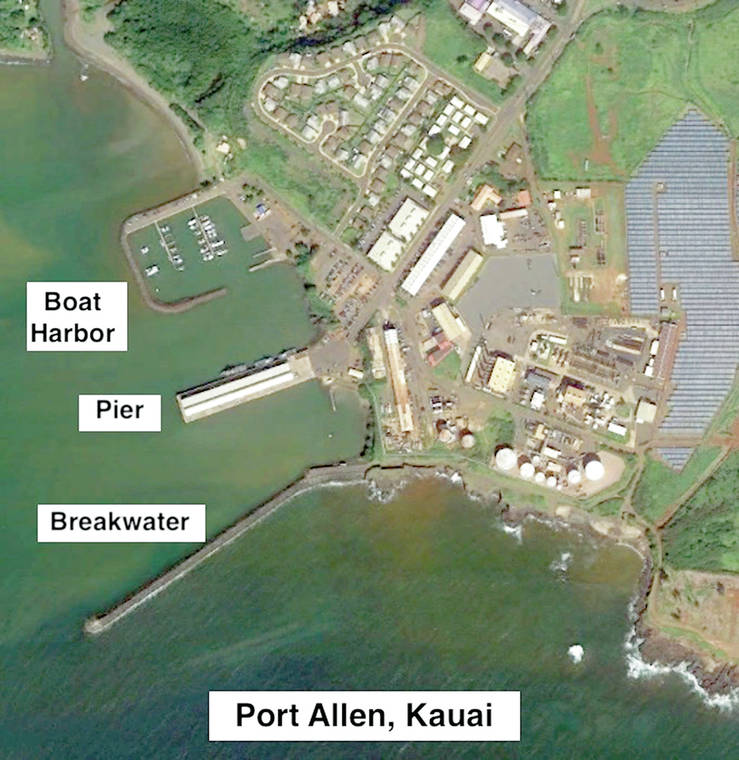In 1933, John Waterhouse, the president of Alexander &Baldwin, acting on behalf of Kauai shippers using Port Allen Harbor, urged the Board of Engineers for Rivers and Harbors (BERH) in Washington DC to recommend a $880,000 harbor improvement project for Port Allen, of which $200,000 would be funded by local interests.
Waterhouse’s goal was to transform Port Allen into an economical, protected, deep-draft harbor.
The project would encompass the construction of a breakwater, the deepening of the harbor, and the building of a pier that ships could tie to which would eliminate laborious and expensive lightering to and from shore and ship.
Specifically, the project called for a 1,200-foot, rubble-mound breakwater, the dredging of a 35-foot deep, 1,000 by 1,500-foot harbor basin and the dredging of an entrance channel 500 feet wide by 35-feet deep, as well as a new 500-foot pier.
Following the BERH’s recommendation, President Roosevelt’s Public Works Administration authorized construction in 1933.
Thereafter, bids were requested and Kauai Railway Co. was awarded the contract for construction of the breakwater, with the federal government carrying out dredging operations, and with E. E. Black, Ltd. being contracted to erect the pier.
Construction of the breakwater, which commenced in 1934, required the building of a macadamized road connecting the breakwater site with a quarry located over a mile away, over which 208,000 tons of rock were carried on six 9-ton dump trucks to complete the breakwater.
Additionally, more than 700 creosote piles were driven into the bay and about 1,200,000 feet of lumber were used in building the breakwater.
Equipment used included a 2-yard shovel, a 25-ton crane, two 20-ton traveling flat-bottomed barges and pile drivers.
A. A. Hartman, who built the Wailua Bridge and superintended work on breakwaters at Hilo and Lanai, was the breakwater superintendent.
Work on the breakwater was concluded in 1935; a year later, dredging was completed, and in 1939, the new 500-foot pier, capable of berthing two ships and supporting a terminal building equipped with railroad tracks to facilitate loading of ships, was opened for business.
•••
Hank Soboleski has been a resident of Kauai since the 1960s. Hank’s love of the island and its history has inspired him, in conjunction with The Garden Island Newspaper, to share the island’s history weekly. The collection of these articles can be found here: https://bit.ly/2IfbxL9 and here https://bit.ly/2STw9gi Hank can be reached at hssgms@gmail.com



Surf must have been amazing before the breakwall oh well gotta have electricity